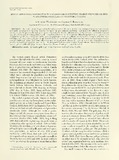Sphinx Moth Pollinations for the Endangered Western Prairie Fringed Orchid, Platanthera Praeclara in Manitoba, Canada
Metadata
Show full item recordAuthor
Westwood, A. Richard
Borkowsky, Christie L.
Date
2004Citation
A. Richard Westwood and Christie L. Borkowsky, "Sphinx Moth Pollinations for the Endangered Western Prairie Fringed Orchid, Platanthera Praeclara in Manitoba, Canada," Journal of the Lepidopterists' Society, 58(1) (2004): 13-20.
Abstract
The western prairie fringed orchid, Platanthera praeclara (Sheviak & Bowles), is an endangered species in North America. In Manitoba orchids produce lower numbers of seed capsules than more southern populations. Exploration of the pollination biology for P. praeclara is critical to preserve this endangered species. This study identified the pollinators of P. praeclara using cone and malaise traps and tested the effectiveness of marking pollinators with traces of Day-Glow® orange marker powder. Although Lepidoptera were numerous in orchid plots during daily observation periods, including day flying Sphingidae, none were pollinators for P. praeclara. Among the 5856 insects from 49 families captured over 45 trapping days, six sphinx moths, two specimens of Hyles gallii (Rottenburg) and four specimens of Sphinx drupiferarum J.E. Smith (Sphingidae), were found with two or more orchid pollinia attached to their eyes and were confirmed as pollinators of P. praeclara. S. drupiferarum is uncommon in southern Manitoba and H. gallii appears to be a less efficient pollinator than S. drupiferarum. Proboscis length, eye width and flight period may influence the efficiency of biotic pollination of the orchid.

